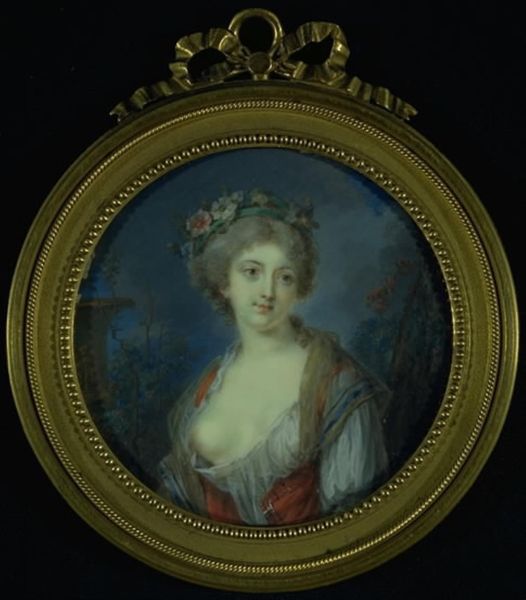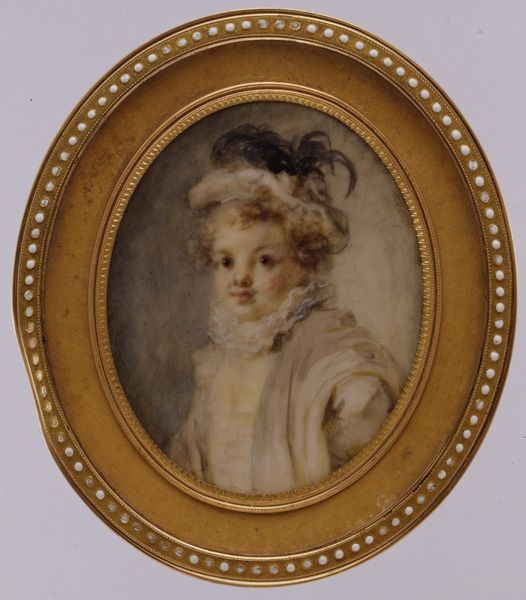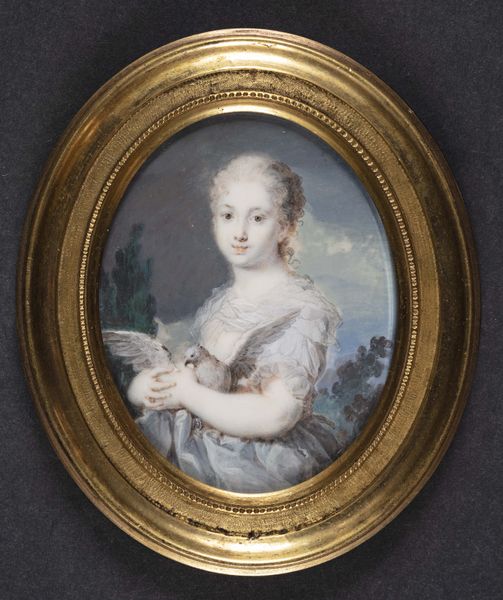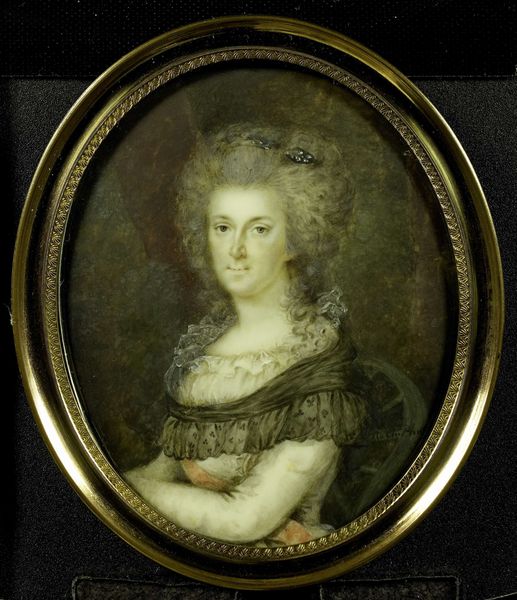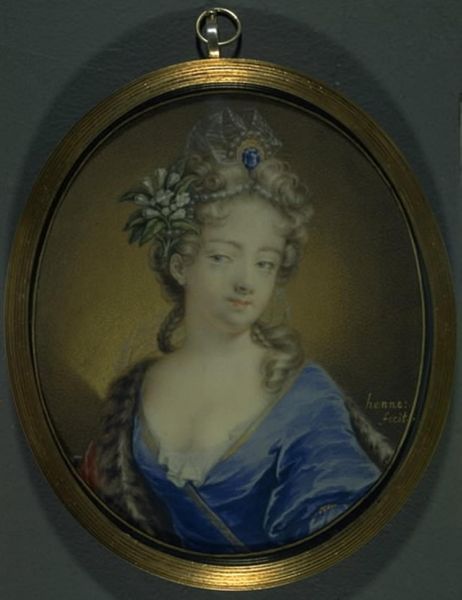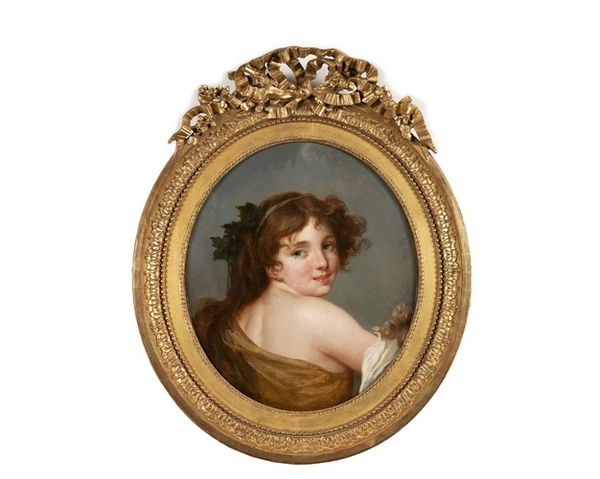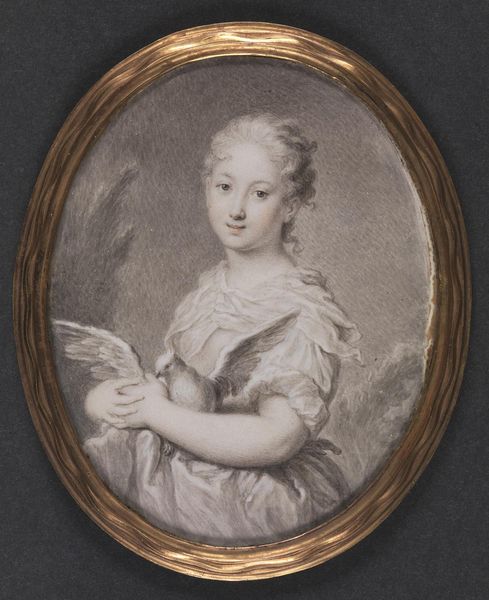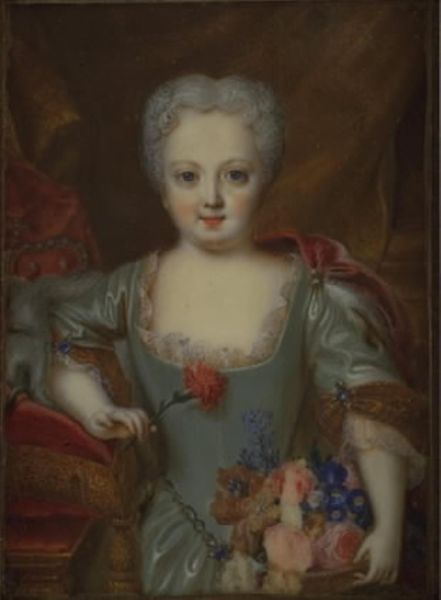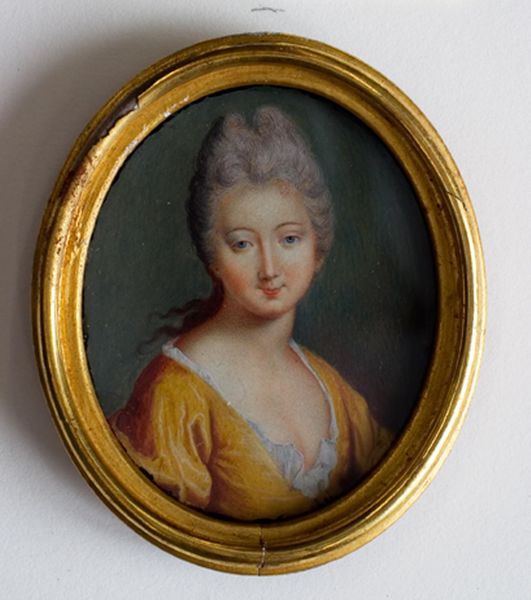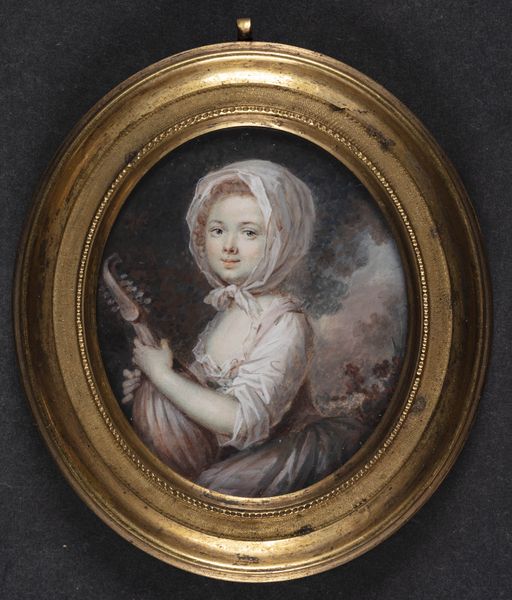
Dimensions: 7.2 cm (height) x 5.8 cm (width) (Netto)
Editor: This is "The Artist's Daughter Adelaide" created around 1789-1790 by Cornelius Høyer, using gouache. The rendering is so delicate. How was such precision achieved? What do you notice about the materials and methods used here? Curator: Looking closely, the smooth surface achieved with gouache belies the intensive labour involved. Gouache, a less valued medium compared to oils, speaks volumes about artistic economies and priorities during the late 18th century. Who typically commissioned portraits like these and what message were they hoping to convey? Editor: It's fascinating how the medium influences our perception. Was gouache more accessible or affordable, therefore influencing who could commission such work? Curator: Precisely. Consider the sitter – the artist's daughter. The intimacy suggests a domestic setting, contrasting the grandeur typically associated with Rococo portraiture. Think about the labour behind sourcing the pigments, grinding them, and applying them in such minute detail. This elevates the portrait beyond simple aesthetics; it becomes a document of class, consumption, and skill. Does knowing this shift how you see the delicate aesthetic? Editor: Absolutely. It adds layers of understanding to the sweetness of the portrait. The choice of materials becomes integral to the narrative, reflecting economic and social realities. Curator: Exactly. The 'craft' of gouache in portraiture shouldn’t be dismissed, but critically examined in its social and material contexts to fully appreciate its role. Editor: I will definitely look at paintings and their materials differently from now on! Curator: I'm glad. Seeing art through a material lens reveals much more than just the surface.
Comments
No comments
Be the first to comment and join the conversation on the ultimate creative platform.
